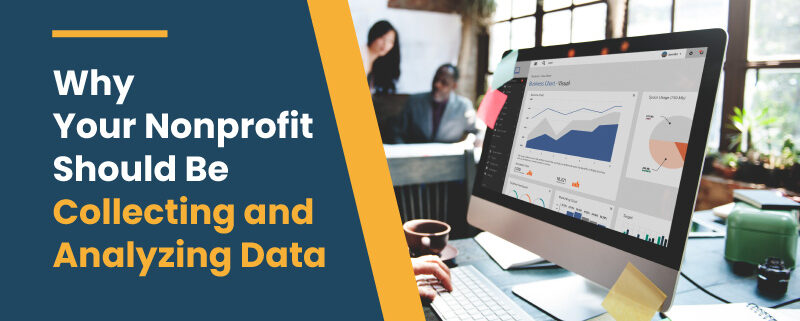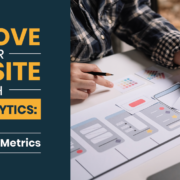Why Your Nonprofit Should Be Collecting and Analyzing Data
As a nonprofit fundraising or marketing professional, you’re always looking for ways to connect more deeply with your donors and create outreach campaigns that resonate with them. Whether it’s your online fundraising pushes or awareness campaigns, you want to develop content that speaks directly to your supporters’ preferences and motivations.
These outreach efforts all have one thing in common — they’d all be vastly improved with the incorporation of data analytics.
Never before have nonprofits had greater access to high-quality data, such as charitable giving statistics, as well as the necessary tools to collect and understand the data. This information can help guide your organization’s fundraising and marketing efforts to ensure you’re making the most of every supporter interaction.
In this quick guide, we’ll discuss the three reasons why your nonprofit should be collecting data:
- Data collection is no longer out of reach.
- Data helps you connect with your donors.
- Data can improve your fundraising.
We’ll also highlight a few best practices for editing and organizing your data properly to ensure you’re using it to its full potential. Let’s get started.
1. Data collection is no longer out of reach.
The first reason your nonprofit should be collecting and assessing data is because the process has never been easier. Software solutions specifically built for nonprofits have made data collection and analysis accessible for organizations of all sizes.
Let’s take a look at a few of these solutions and how they simplify and streamline the data collection process:
- Nonprofit CRM: Your nonprofit’s CRM is your most important tool for collecting and assessing donor-related data. Plenty of nonprofits turn to comprehensive systems like the Salesforce Nonprofit Success Pack (NPSP) in place of other solutions to store and assess donor data using a robust database. With your donor database, you can store data regarding donors’ names, contact information, past giving history, event attendance, and more. Then, you can leverage this data in outreach campaigns and donor stewardship efforts to build genuine supporter relationships.
- Donation software:With powerful donation software, you can not only accept online payments but also automatically collect information about the individuals submitting those gifts, such as their names, contact information, and even how they heard about you.
- Event management software: Your nonprofit probably hosts a variety of events throughout the year, from fundraising 5Ks to galas, auctions, and more. Event management software allows you to easily track metrics such as ticket sales, total fundraising amount, and attendance rate.
You might think these tools are only available to large, well-funded organizations, but the truth is that nonprofits of all sizes can access them. For instance, the Salesforce NPSP offers free subscriptions for up to 10 users from your organization.
Also, while you may assume these tools are complicated to set up and use on an ongoing basis, that isn’t the case. The initial set-up for some of these solutions will take some work, but once they’re up and running, they can function nearly automatically and often integrate with your existing software platforms. This can save your team plenty of time and allow you to avoid any manual data entry and assessment tasks.
2. Data helps you connect with your donors.
Getting to know your supporters is probably one of the most pressing tasks you work on daily. When you prioritize building authentic relationships, it becomes much easier to ask for donations later on down the road.
Using donor data, you can step into supporters’ shoes to understand their perspectives and figure out the best ways to reach them on a personal level. Collecting donor data allows you to:
- Personalize messages: You can use tools like your online donation form and CRM to store personal information that lets you get to know your donors better. Then, you can personalize outreach using donors’ names, referencing their previous involvement, and sending them new opportunities based on their past interests.
- Segment donors for tailored outreach: Using the donor data stored in your nonprofit CRM, you can group donors based on shared characteristics using a process called segmentation. For example, you might create groups for new donors, volunteers who haven’t yet donated, lapsed donors, and major donors. After you’ve defined these groups, you can send messages to each segment that resonate with their preferences and interests. This makes your outreach feel more relevant and relatable.
- Optimize marketing content: All of the marketing platforms you use, from your email marketing system to your social media pages, collect analytics about your audience’s behavior. These metrics allow you to understand which marketing messages supporters interacted with the most and why. You can capitalize on your most engaging strategies and adjust the ones that aren’t working as well to optimize your marketing content.
Your supporters broadcast their preferences and interests constantly through the ways they interact with your organization. It’s your job to collect these data points and assess them strategically to connect with your audience more deeply.
Supporters will feel much more inclined to continue connecting with your organization if you’ve made a serious effort to get to know them and appeal to their interests. This can help boost your donor retention rate and develop long-lasting donor relationships.
3. Data can improve your fundraising.
You may sometimes feel like your fundraising planning consists of a little bit of strategy and a little bit of luck. With data, you can make your campaigns more strategic by relying on hard facts rather than hunches or best guesses.
Here are just some of the ways that data can improve your fundraising:
- Event analytics can help you determine why attendees decided to register, when they were most engaged throughout your events, and what influenced them to give to your mid-event fundraising pushes. Plus, you can collect data through event tools such as sign-up sheets or post-event surveys which ask supporters to provide feedback on their most and least favorite aspects of the experience. All of these factors allow you to plan a more engaging event next time around.
- Donation page data can help you determine your most popular donation amounts and donors’ preferred giving methods. Then, you can use this information to establish your suggested giving amounts and ensure that you have the proper payment processor system.
- Donor data can also allow you to craft more tailored fundraising requests. You can pull information from your CRM such as your donors’ names, titles, and past donation amounts to personalize your outreach and request an appropriate donation amount.
- Predictive data can help you conduct prospect research — the process of identifying potential major donors. NPOInfo’s guide to fundraising data explains that you can use your CRM to keep an eye on donor trends, such as donation size growth and increased participation in events and other opportunities. These trends might reveal that certain donors are willing and able to become major contributors.
This is just the tip of the iceberg when it comes to how you can use data to optimize your fundraising campaigns. You can also keep track of overarching fundraising trends using data points such as your fundraising return on investment (ROI), online donation rate, and donor retention rate. All of these data points will give you a bird’s-eye view of the effectiveness of your fundraising strategies and where you should focus your energy.
Before you can start collecting and leveraging data effectively, ensure your organization has a solid data hygiene strategy. Audit your existing data for irregularities, eliminate or correct errors, and establish standardized data entry procedures for your entire team to follow.
Once your data is clean and organized, you’ll be able to rely on it for future fundraising and marketing campaigns. This can help boost your ROI since you’ll only be directing outreach to active supporters using their accurate contact information.
When your organization has a clear plan for collecting and analyzing multiple types of data, you’ll be prepared to take on fundraising challenges with an informed, data-driven strategy.

About the Author
Karin Tracy
Karin Tracy, VP of Marketing at Fíonta, is a seasoned designer and marketer with a passion for serving nonprofit organizations and being a small part of bettering the world. She is a certified Pardot Consultant and Marketing Cloud Email Specialist, a fan of automation and reporting, a lover of animals, and devourer of popcorn.
At Fíonta, Karin drives marketing efforts for all internal and external projects. Her direct service work is focused primarily on marketing strategy and automation for Fíonta’s MCAE (Pardot) clients.




